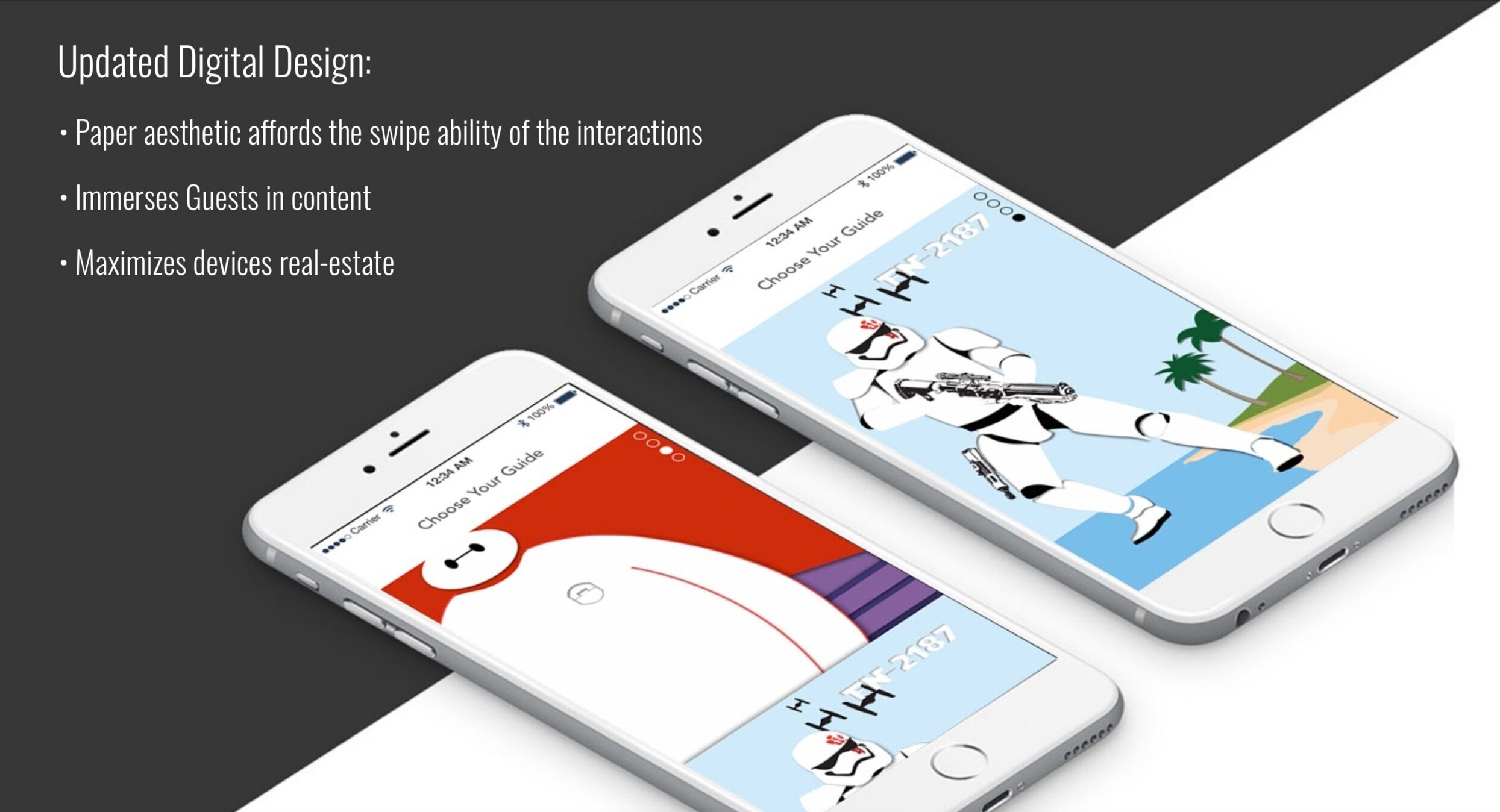OVERVIEW
Rafaki is a innovation concept pitch designed to address the overwhelming experience of planning an itinerary for that allows guests to maximize the time they have at the parks while easing anxiety that they are missing out on key experiences. Our team began this project by asking ourselves:
“How can Disney help guide Guests through the magic of the park and not have missed opportunities?”
ROLE Lead Product Designer
TEAM MEMBERS Sadia Aboutalib (Product Manager) Mike Allen (Developer / Machine Learning)
SIGNIFICANCE – This project was a self-initiated blue sky pitch that was added to the product roadmap and evolved to become Disney Genie (yet to be released). Though I was a part of the concept team, I am not on the Genie team, due to being allocated to a confidential Star Wars project.
DELIVERABLES Secondary Research Data Analysis Wireframes Comps Executive Presentations
Context
We leveraged reinforcement machine learning to power the Rafaki app. Our developer created an independent TensorFlow algorithm that learns and builds a dynamic itinerary to maximize long term rewards for Guests.
This algorithm drove the suggestions surfaced in the app and incorporated historical data such as wait-times and park attendance to be predictive and relevant.
Initial iterations of the interface included traditional way-finding UI. We considered displaying 2 entire itinerary options to guests & allowing them to select the itinerary they wanted for the day.
In further explorations we pivoted back to the traditional way-finding UI but incorporated functionality to pick up the attraction suggestion cards and rearrange them and to swipe to delete, add breaks, or request new suggestions.
Issues with This Approach
It wasn't intuitive for Guests to know that swiping to delete would also allow them to edit or make new requests.
Allowing the guests to rearrange the cards gave them too much flexibility, making it harder to train the algorithm for the initial release.
Flexibility defeated the purpose of our app because they were essentially still planning out their day, just in a more visual way.
That flexibility also hindered our algorithm, it couldn't re-direct traffic and aide congestion, if Guests circumvented the suggestion engine. We couldn't get positive feedback with a passive interface. How would we know (beyond geo-location) if the Guest attended the suggested attraction and enjoyed it? This would hinder personalization further down the line and make future suggestions less relevant.
We decided to move toward a visual based interface where guests input preferences into the app before receiving recommendations.
Guests swipe right to access preferences such as duration at the park and interests and reservations and FastPasses.
Guests can swipe left to view visual wayfinding directions to navigate to suggested attractions.
Suggestions are presented full screen in a whimsical design with a time frame and accurate wait times. The at-a-glance dock at the bottom gives high-level information about upcoming suggestions (taking into consideration scheduled reservations and FastPasses).
Specific details aren't given about the upcoming suggestions due to live updates of the algorithm running in the background. We needed the flexibility to account for unforeseen things such as surging in attendance or rides needing refurb. We preferred not to explicitly state what’s next when we couldn't guarantee it would be the best choice for the guest when the window of opportunity arose.
Swiping up allowed for feedback and confirmation of the suggestion.
Negative feedback is input by the Guest requesting an alternate experience. Positive reinforcement is input by the Guest asking for the next suggestion.
Tapping "What's Next" automatically slides up 2 choices with “suggested because” messaging.
If anything were to happen that would cause the current suggestion to not be the best choice for the Guest, error messaging would display that prompts them to shake the phone to re-route for an alternative suggestion.
We also considered a multi-device, omni-channel experience.
Outcome
This project was a data-informed blue-sky pitch that was added to the product roadmap for our organization. There are not many products that go on to ship from pitches, but this one evolved to become Disney Genie, releasing later in 2020. Read about it here.
Though I served as the Lead Product Designer (owning the interaction and visual design for the product) during Rafaki, I was re-allocated to a confidential Star Wars project and could not contribute to Genie.









